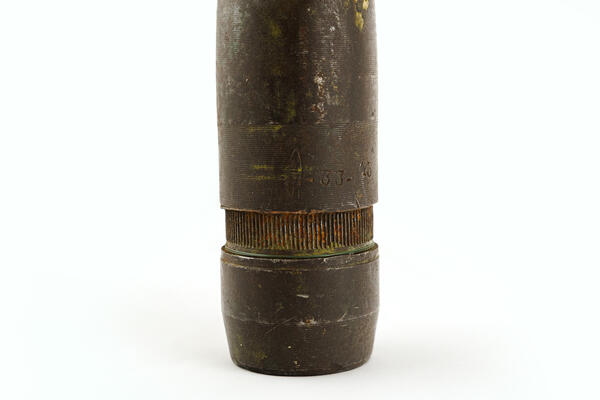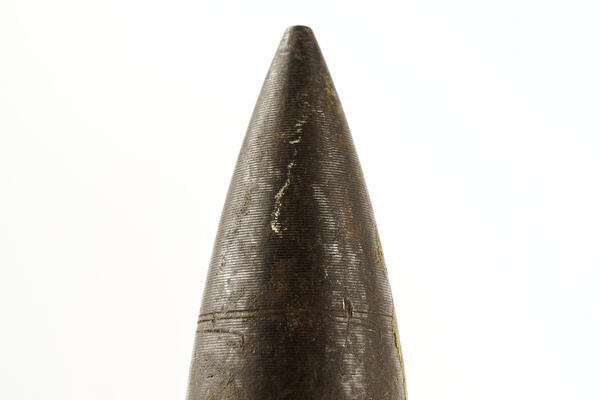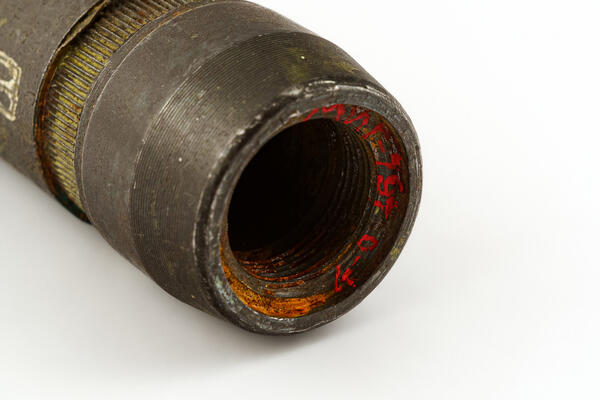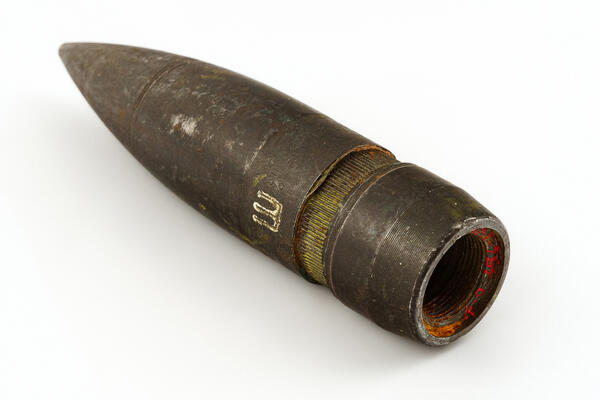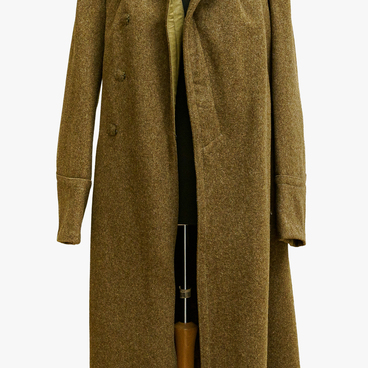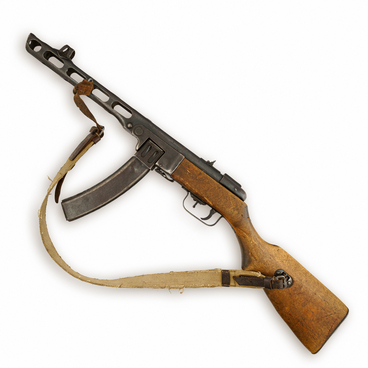During the Great Patriotic War, 45-millimeter caliber projectiles were used for anti-tank guns of the 1937 model (53-K). As of June 22, 1941, the Red Army had more than 16,000 of these guns in service. The gun was designed to fight against enemy tanks, self-propelled and armored vehicles. For the 1930s–1940s its armor penetration was sufficient for effective combat: from 500 meters it penetrated 43-millimeter armor. This made it possible to fight military vehicles protected by bulletproof armor.
The wedge-type breech mechanism of this gun was equipped with a semi-automatic mechanism. From 1942, the 45-caliber gun underwent several improvements. By that time, the production of the 53-K had been discontinued, replaced by a more powerful M-42 model. Its positive qualities were high mobility and ease of camouflage. This allowed the new guns to be used not only by the regular army, but even by partisans. The head of the shell on display has the shape of a cone. It is hollow inside, with carving at the edge. In the lower part of the exhibit there is a groove with a ribbed base in a circular pattern, and above it, there are numbers embossed on one side: “33”, “43”. To date, the meaning of the numbers has not been established as they do not coincide with the nomenclature of the ammunition.
